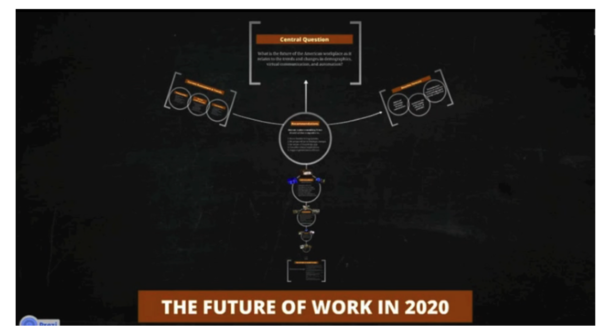The Future of Work
Research Abstract

The central question considered in this report is: What is the future of the American workplace as it relates to the trends and changes in demographics, virtual communication, and automation? As the American population becomes older, more educated, more diverse, and more competitive, the American business market is also becoming more volatile with technological advancements and globalization pressures. As the future structure of business becomes more uncertain, we must look at trends that have created the current environment and assess what outcome is the most likely to result.
In addition to noting the expected trajectory of the structure of the American workplace according to historical trends, we have formulated several alternative scenarios that will ultimately portray the possible outcomes for the future workplace that are impacted by major technological and societal transitions. Within the scenarios, we can look at variables like employment rate, minimum wage, smart technology usage, big data analytics, and research and development in the technology sector in order to see the current health of the workplace and the possible changes in its overall structure. The various explanatory variables are projected through trend analysis and developed into a baseline forecast, which helps portray where we are currently heading. However, due to the volatile nature of the business market, these baseline forecasts can easily be interrupted and reshaped by uncertainties, which have been identified as governance, evolving skill sets, limited resources, and educational changes. These potential interruptions in the trend analysis have led us to four different alternative scenarios: Manifest Destiny (Growth), the Lasso Effect (Constraint), Transhumanism (Transformation), and Cyberpocalypse (Collapse). Using the Alternative Futures Method as created by the Institute for the Future (IFTF, 2013), these scenarios help illustrate potential future settings and their implications on the American workplace. The report concludes by offering suggestions for handling the potential outcomes of each possible scenario.